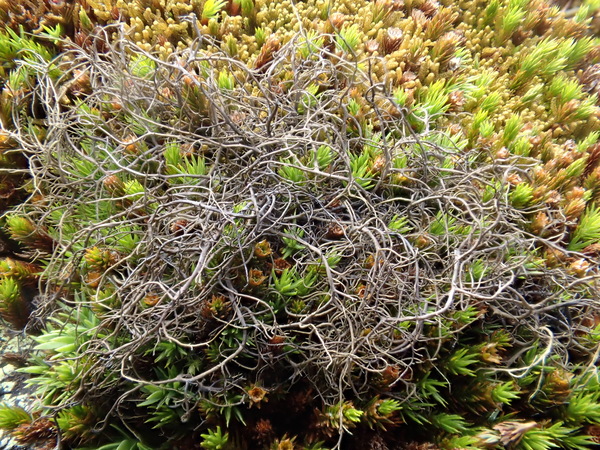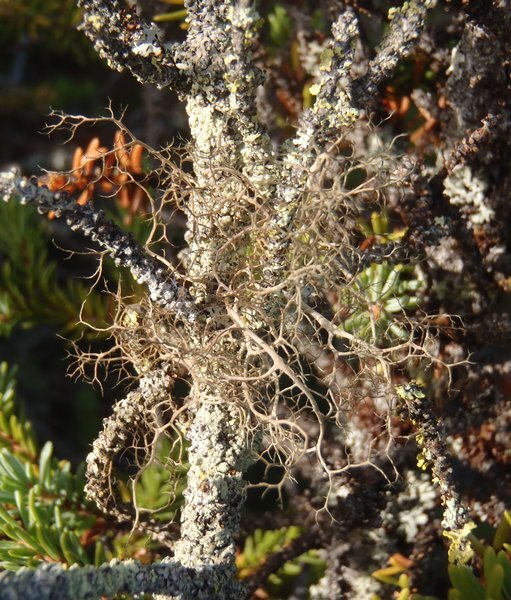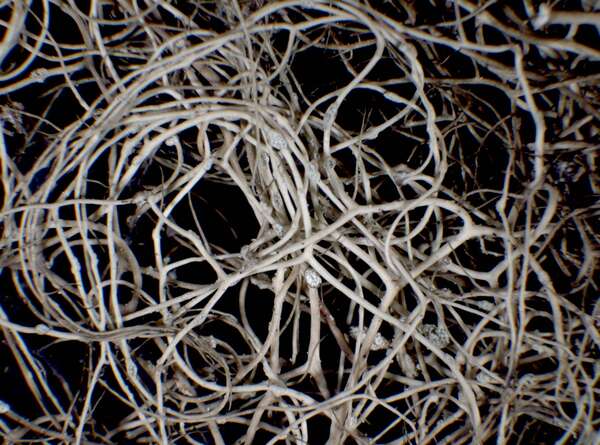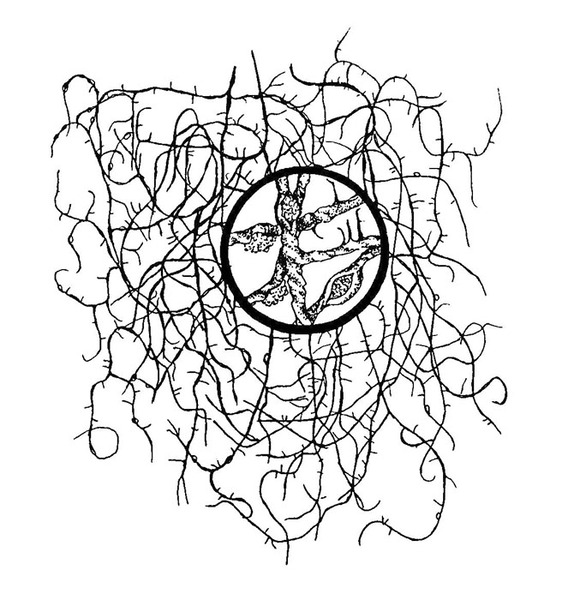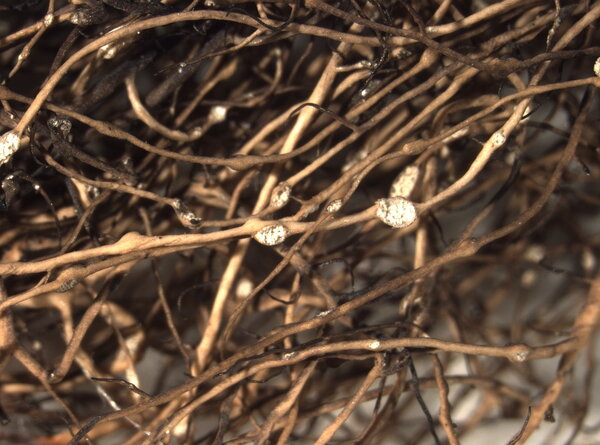Bryoria nadvornikiana (Gyeln.) Brodo & D. Hawksw.
Opera Bot., 42: 122, 1977. Basionym: Alectoria nadvornikiana Gyeln. - Acta Fauna Fl. Univ., ser. 2, 1: 6, 1932.
Synonyms: Alectoria altaica (Gyeln.) Räsänen; Alectoria implexa var. nadvornikiana (Gyeln.) Zahlbr.; Alectoria spinulosa Ahlner nom. nud.
Distribution: N - Frl, Ven (Nascimbene & Caniglia 2000, 2000b, 2002c, 2003c, Nascimbene & al. 2006e, Brackel 2013), TAA (Nascimbene & Caniglia 2002c, Nascimbene & al. 2006e, 2007b, 2014, 2022, Brackel 2013, Nascimbene 2013, 2014, Nimis & al. 2015, Trindade & al. 2021), Lomb (Rivellini 1994, Alessio & al. 1995, Nascimbene & al. 2006e), Piem (Morisi & Sereno 1995). C - Tosc (Loppi & al. 1994, Benesperi & al. 2007), Sar (Zedda 2002, 2002b). S - Cal (Puntillo 1996).
Description: Thallus fruticose, tufted in basal parts, pendent in the apical parts, attached by a basal holdfast, to 20 cm long, pale grey to pale brown, usually with a pink hue, rarely dark brown in sun-exposed morphs, isotomic-dichotomously branching with obtuse (towards the base) to acute angles, the main branches mostly terete, often with sparse to abundant lateral spinules. Soralia sparse to usually abundant, small, tuberculate, white to greenish white, with farinose soredia. Pseudocyphellae sparse, inconspicuous, or usually absent; medulla white, compact. Apothecia extremely rare, zeorine, with a brown disc, to 2 mm across. Asci 8-spored, Lecanora-type. Ascospores 1-celled, hyaline, subglobose to ellipsoid, 5-7 x 3-4 μm. Photobiont chlorococcoid. Spot tests: cortex and medulla K+ yellow, C+ red, KC+ red, P+ yellow; soralia P+ red. Chemistry: alectorialic and barbatolic acids, sometimes atranorin; fumarprotocetraric acid in soralia.Note: a boreal-montane, circumpolar, shade-tolerant species of mixed upper montane to oroboreal forests, mostly on low, dead twigs and branches of conifers.
Growth form: Fruticose filamentous
Substrata: bark
Photobiont: green algae other than Trentepohlia
Reproductive strategy: mainly asexual, by soredia, or soredia-like structures (e.g. blastidia)
Commonnes-rarity: (info)
Alpine belt: absent
Subalpine belt: rather rare
Oromediterranean belt: absent
Montane belt: very rare
Submediterranean belt: absent
Padanian area: absent
Humid submediterranean belt: absent
Humid mediterranean belt: absent
Dry mediterranean belt: absent

Predictive model
Herbarium samples
Growth form: Fruticose filamentous
Substrata: bark
Photobiont: green algae other than Trentepohlia
Reproductive strategy: mainly asexual, by soredia, or soredia-like structures (e.g. blastidia)
Commonnes-rarity: (info)
Alpine belt: absent
Subalpine belt: rather rare
Oromediterranean belt: absent
Montane belt: very rare
Submediterranean belt: absent
Padanian area: absent
Humid submediterranean belt: absent
Humid mediterranean belt: absent
Dry mediterranean belt: absent

Predictive model
| Herbarium samples |
 Index Fungorum
Index Fungorum
 GBIF
GBIF
